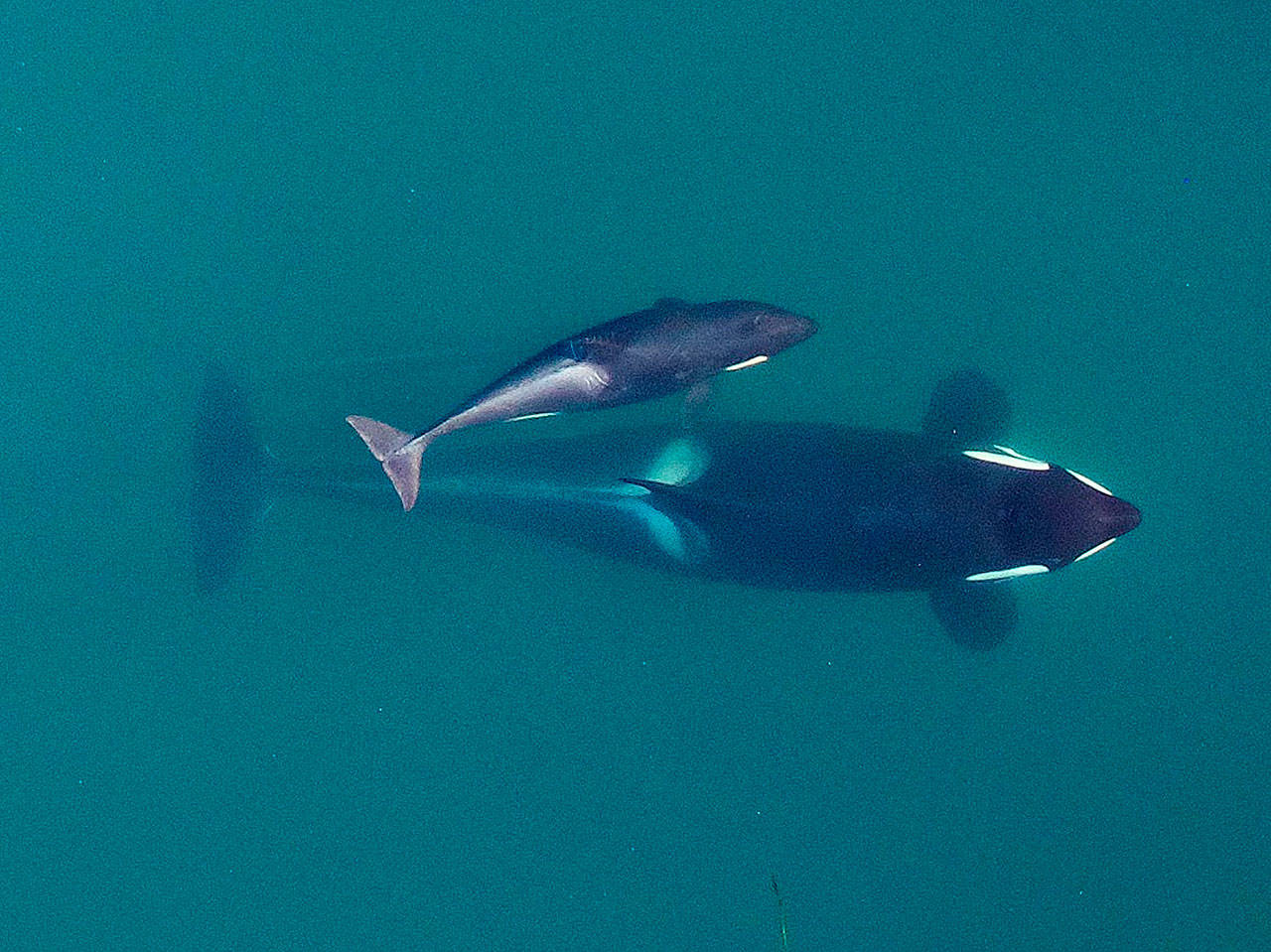By Phuong Le
The Associated Press
SEATTLE — Experts are preparing rare emergency efforts to administer antibiotics or feed live salmon to save a young emaciated orca that’s part of a critically endangered pod of killer whales.
But veterinarians haven’t spotted the 3½-year-old female killer whale in several days.
They are waiting for her to show up again in state waters so they can zip out on a boat to do a health assessment, said Teri Rowles, marine mammal health and stranding co-ordinator for NOAA Fisheries.
The whale known as J50 is underweight and might have an infection.
“It is very possible that she has succumbed at this point and that we may never see her again,” Rowles told reporters Tuesday.
“We are hopeful that there’s still a chance that we will be able to assist her with medical treatment to give her enough time to get nourishment and treat infections, if indeed that is what is causing her decline.”
The orca, which was last seen Friday, is part of an endangered population that has dwindled to just 75 whales.
Another female orca from the group that spends time in the U.S. northwest waters attracted global attention as the grieving animal tried to keep her dead baby afloat.
Veterinarians in the field will decide whether to give the ailing orca antibiotics, which would last between 10 and 14 days, using either a dart injector or a long pole syringe.
“If it’s determined that antibiotics would be useful, then antibiotics through injection is going to be our best course rather than antibiotics through food, because we recognize that we won’t able to treat her every day,” Rowles said.
If things go well, she said, the team could move ahead with feeding the orca live salmon from a boat. The orca would initially get just a few fish to see whether she takes it and how she and members of her pod respond before deciding whether to give her salmon dosed with medication.
Rowles said injections of antibiotics or sedatives have been given to other free-swimming whales or dolphins that were injured or entangled but it hasn’t been done for free-swimming whales in this area. What would be unique is giving the orca medication through live fish, Rowles said.
Whale experts have been increasingly worried about J50 after a researcher last month noticed an odor on the orca’s breath, a smell detected on other orcas that later died.
Researchers took breath samples, and a drone flown above the whales Wednesday showed that J50 is much skinnier and her body condition has worsened.
Rowles said such imagery has shed more light on the whales’ overall body condition and growth over time. That data has documented orcas that declined and then disappeared.
She said it became evident that “we needed to intervene to determine potentially what was the cause and whether there was anything we could do to assist her.”
The efforts come as a task force called by Gov. Jay Inslee met Tuesday to come up with solutions to help the whales. It was hearing initial recommendations focused on three main threats to the orcas: lack of food, toxic contamination and boat noise and disturbance. A final report is due in November.
The recent images of the mother orca pushing her dead calf and trying to keep it afloat in Northwest waters has given greater urgency to the fate of the whales, said Les Purce, co-chair of the task force.
“The big question is, can we craft public policy that can make a difference in the future of the orca, and by doing so make a positive difference in how we live in Puget Sound?” Purce asked in an interview Monday.
The group will prioritize short-term and long-term actions, many of which are certain to focus on recovering the prized salmon that the fish-eating orcas eat.
The orcas prefer Chinook salmon but many of those runs are endangered or threatened.
Initial actions being discussed include ramping up hatchery production, restricting fishing in areas that are important to the orcas, offering financial compensation to recreational and commercial fishermen to stop or reduce fishing in certain areas and killing sea lions or birds that eat certain runs.
Others are pushing to tear down four dams on the lower Snake River.

